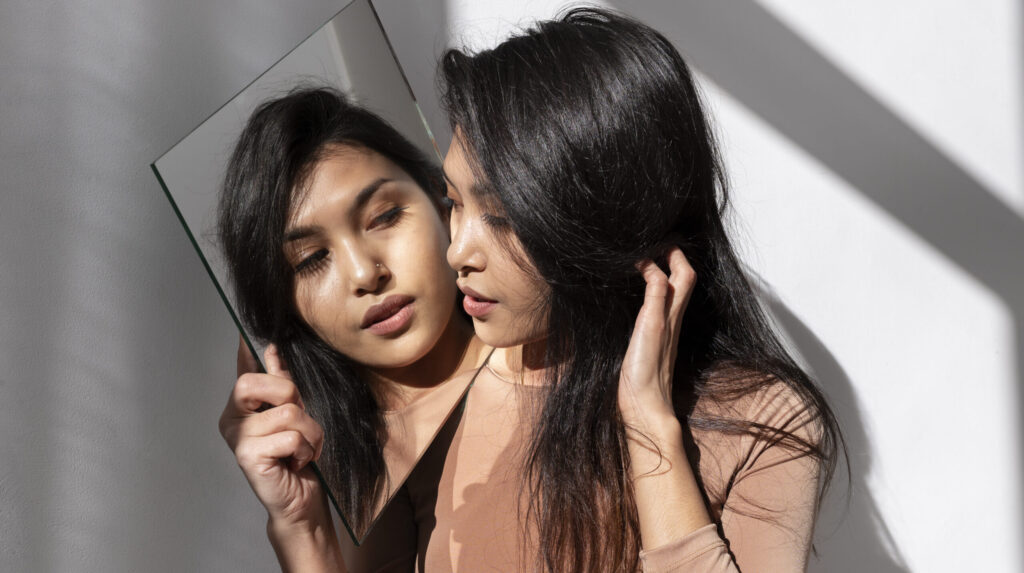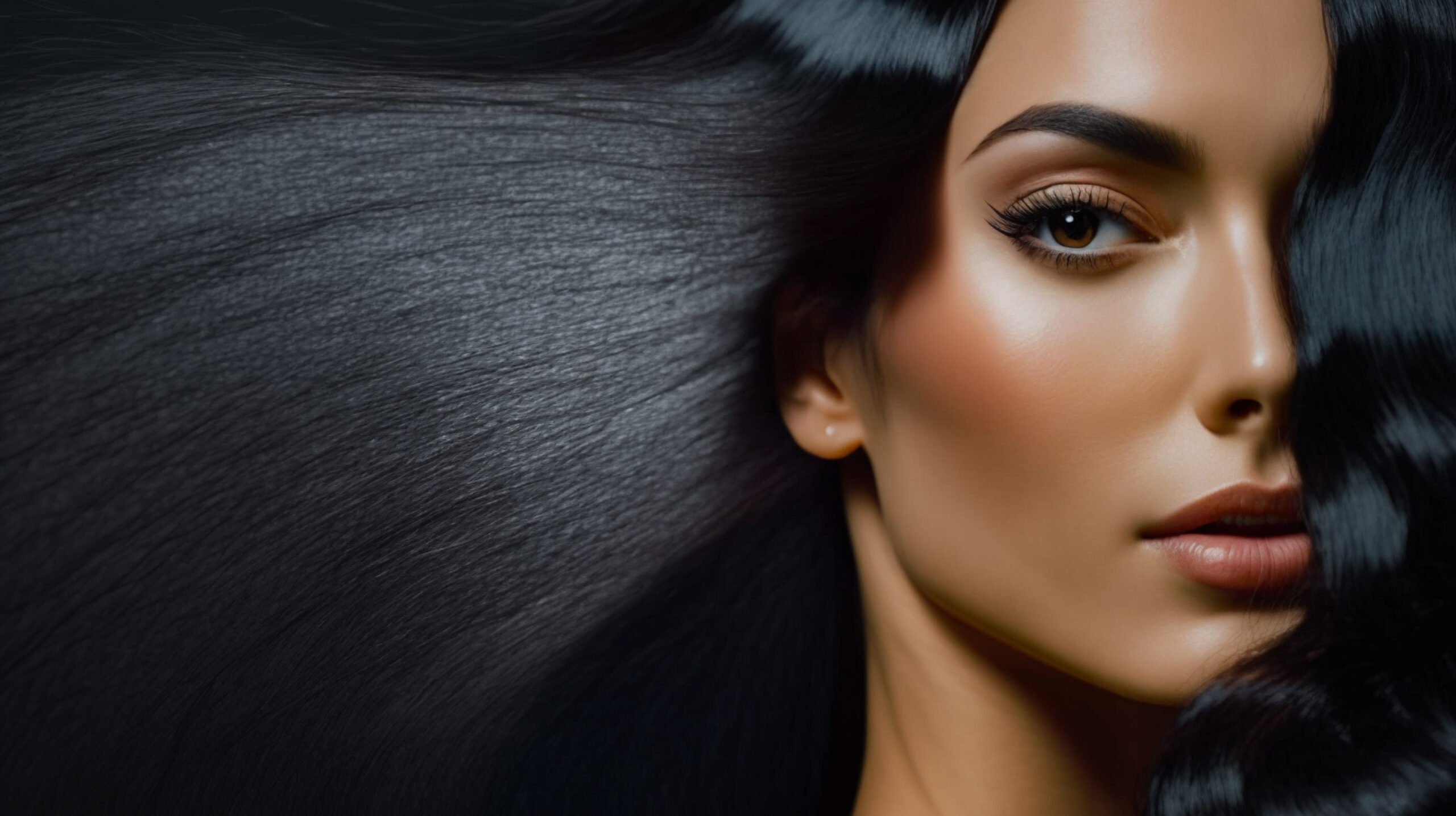Black hair is king, in all its magnificent variation. Every curl pattern, from silky strands to kinky coils, has its narrative to tell. However, understanding this lovely language may be difficult, particularly for beginners. Queens, do not fear! By revealing the mysteries of black hair types, this guide will let you confidently accept and rock your natural crown with black hair types.
Comprehending the Alphabet: The Significance of Understanding Your Black Hair Types
Knowing your hair kind is similar to knowing your language. It enables you to select the ideal goods, styling methods, and general regimen for maintaining the health and viability of your crown. Understanding your curl pattern facilitates:
- Combat damage: Dryness, breakage, and split ends can result from selecting the incorrect products. Recognizing the demands of your hair helps avoid these problems.
- Style effortlessly: The way that various curl patterns react to different style methods varies. Understanding your type helps you to effortlessly obtain the ideal appearance.
- Embrace your individuality: Your hair is a part of your identity. Understanding its unique characteristics allows you to love and appreciate it fully.
A Comprehensive Look at Black Hair Types: Interpreting Your Curls
There are Black hair types are divided into four primary categories by the Andre Walker Hair Typing System, each with subtypes. Now let’s examine each class and its distinguishing features:
Type 1: Sleek and Straight
Consider Beyoncé’s famously styled hair. Type 1 hair has minimal to no natural curl and is straight. It usually has a smooth, glossy appearance and can be fine, medium, or thick. It can nevertheless benefit from routine conditioning and heat protection even though it is less prone to dryness.
Type 2: Curly Treasures
Type 2 hair features loose S-shaped waves that can be modest to pronounce, akin to Zendaya’s beachy waves or Gabrielle Union’s bouncy curls. For this type of hair, the right amount of moisture and hold are needed to reduce frizz and improve wave definition.
Type 3: Fuzzy Adorables
Consider the lavish curls of Lupita Nyong’o or the tight ringlets of Solange Knowles. Well-defined curls with a pronounced S-shaped pattern characterize type 3 hair. It falls under the following categories:
- 3A: Medium to high-density curls that are loose and bouncy.
- 3B: Frizz-prone and tighter curls with a distinct spring.
- 3C: Tight coils that have shrunk significantly and have a dry propensity.
Coily Queens, Type 4: 4A, 4B, & 4C
The pinnacle of tightly coiled textures is type 4 hair, as seen in the kinky coils of Rihanna and the tight afro of Angela Bassett. It is also divided into:
- 4A: S-shaped curls that are tightly wound, have a medium to high density, and exhibit moderate shrinking.
- 4B: Z-shaped coils packed closely together, showing noticeable shrinkage and a wiry or cottony feel.
- 4C: Superb, tightly packed Z-shaped curls that have the propensity to become dry and brittle along with significant shrinking.
Beyond the Fundamentals: Things to Take Into Account
Although the Andre Walker System offers a useful foundation, knowing your hair entails more than just its curl pattern. Take into account these other variables:
Your hair’s porosity describes its capacity to take in and hold onto moisture. Hair with high porosity absorbs products rapidly yet finds it difficult to retain moisture. Water is initially repelled by low-porosity hair, but once absorbed, it is efficiently retained. Understanding your porosity enables you to select the best hydration methods and goods.
The quantity of hair strands sprouting per square inch is referred to as density. Thick hair has more strands than fine hair does. Density affects product absorption and styling decisions.
Accepting Your Texture: Care Instructions for Every Type of Hair

Here are some hair care recommendations specific to each black hair types now that you are aware of your curl pattern and other important details:
Type 1: Sleek and Straight
- Regular shampooing To prevent removing natural oils from hair use a mild shampoo without sulfates.
- Deep condition on occasion: Pay attention to the ends to avoid split ends and dryness.
- Apply a heat shield: Protect your hair against heat styling injury.
- Try out several style techniques: With the appropriate equipment and methods, experiment with textured waves, bouncy curls, and elegant blowouts.
Type 2: Curly Treasures
- Co-washing: This conditioner-based cleaning technique can help define waves and hold onto moisture.
- Hair styling creams and leave-in conditioners: Boost definition and ward against frizz.
- Diffusing: To avoid frizz and promote wave creation, softly dry your hair using a diffuser.
- Plopping: While your hair air-dries, wrap it in a microfiber towel to promote wave definition.
Type 3: Fuzzy Adorables
- Deep conditioning regularly: Regular deep conditioning will help to avoid breakage and dryness in your curls.
- Finger detangling: To reduce breakage, gently untangle using your fingers or a wide-tooth comb.
- Gels and mousses for styling: Sculpt and keep your curls in place.
- Protective styles: If you want to perfect your black hair types, you may add fashionable flare and safeguard your curls with braids, twists, and Bantu knots.
Coily Queens, Type 4:
- Pre-pooing: hair retains moisture, apply oil treatments before hair washing.
- Butter and creamy leave-in conditioners: Heavier formulations offer more intensive moisture.
- LOC method: Layer liquid (water-based products), oil, and cream (LOC technique) to encapsulate moisture.
- Protective styles: To reduce manipulation and preserve length, wear braids, twists, or bantu knots regularly.
- Satinique satin scarf or cap: Sleep on a satin surface to minimize friction and hold on to moisture by wearing a satin scarf or hat.
The Influence of Society: Tools and Motivation for Your Hair Journey
Recall that your black hair types journey is distinct and always changing. Accept experimenting and don’t be afraid to ask experts or wise friends for assistance. The following materials can help you stay motivated:
- Online forums: Participate in forums, YouTube channels, and Facebook groups devoted to black hair care.
- Hair care brands owned by Black people: Encourage businesses that provide high-quality items and are aware of your demands.
- Black hair specialists in the hair salon industry: Seek expert counsel for tailored recommendations and styling methods for your black hair types.
- Follow influencers with black hair types: Learn from their experiences and pick up fresh advice and fashions.
Recall, Queen, that your crown is a potent symbol of your ancestry and identity. Accept your special texture, give it tender loving care, and rock your curls with confidence!
Read our article: Natural Brown Hair Color

